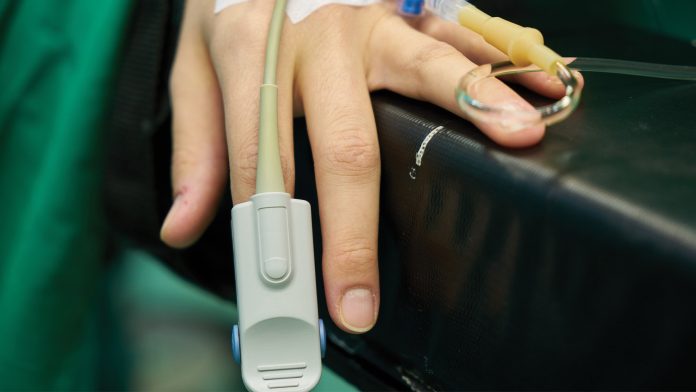
Health Europa discusses the prevalence of gastric cancer within Europe, treatment options and how cancer data can inform health policy and action.
Gastric cancer, or stomach cancer, was the seventh most frequently diagnosed cancer and the fifth most frequent cause of cancer-related deaths in Europe in 2012, according to data from the European Cancer Observatory and the European Network of Cancer Registries (ENCR). Although both incidence and mortality rates have declined in Europe over the decade, two subtypes, cardia and non-cardia, show different trends. Due to late detection, gastric cancer is normally found at an advanced stage. To add to this, treatment options vary, being dependent on both the size and location of the tumour, but are also ineffective for the large majority.
Here, Health Europa discusses the prevalence of gastric cancer within Europe, treatment options and how cancer data can inform health policy and action.
What does the landscape of gastric cancer look like in Europe?
Despite the varying types of gastric cancer, there remains one common characteristic throughout – 95% of stomach cancers develop from the cells within the stomach lining, also known as adenocarcinomas. However, less common forms of gastric cancer include lymphoma of the stomach, developing in the lymphatic tissue, as well as gastrointestinal stromal tumours (GISTs), tumours that can develop in muscle or connective tissue within the stomach wall.
Since the 1930s, incidence and mortality rates for gastric cancer have been in decline. For the most part, this has owed to control of infections of Helicobacter pylori, a bacterium considered to be the major risk factor for gastric cancers.
An ENCR fact sheet, created from data released by the European Cancer Observatory, reported that in 2012 there were 952,000 new estimated cases of gastric cancer, with 723,000 related deaths. Moreover, gastric cancer represented approximately 7% of all cancer mortalities in men, and 6% of those for women. Those countries which have the highest incidence rates also showed a respective comparison in being those with the highest mortality rates. These include:
- Albania;
- Belarus;
- Former Yugoslav Republic of Macedonia;
- The Russian Federation; and
- Latvia.
Meanwhile, those with the lowest incidence and mortality rates include Sweden, Switzerland, France, Norway and the UK.
How can we screen for gastric cancer?
Some of the initial symptoms of gastric cancer are extremely easy to mistake for a range of other, less serious conditions. They encompass:
- Persistent indigestion and heartburn;
- Trapped wind or frequent burping;
- A feeling of bloating or fullness after meals; and
- Persistent stomach pain.
In its more advanced stages, gastric cancer can cause blood in, or black, stools; loss of appetite; and/or weight loss.
Screening encompasses conducting tests in order to detect the early stages of illness before symptoms begin. However, in order for screening to be of benefit, it must prove reliable, efficient and have more advantages than disadvantages. In the UK, there are no national screening programmes which aim to detect gastric cancers, owing to its rarity and cost-benefit analyses. Owing to high incidence rates in Japan and Korea, screening for gastric cancer is routine. As a result, national screening programmes have been established in Japan and South Korea.
The ENCR suggests current genomic and proteomic technologies could assist in identifying those groups at a high risk of developing gastric cancer, as well as assisting in targeting precancerous lesions and personalised treatment. Meanwhile, tests for the serum pepsinogen are being evaluated as a screening possibility which would help to identify those patients at a high risk or detect cancer in its early stages.
What are the chances of survival for gastric cancer patients in the EU?
In 2013, the EUROCARE-5 study gave insight into the estimated survival of gastric cancer patients within Europe between 1999 and 2007. It reported that Europe-wide there was a five-year relative survival of 25%; furthermore, southern Europe had the best chances of survival with 30%, whilst eastern Europe had the poorest chances with 19%.
As a result, prevention is essential in addressing gastric cancers. The ENCR recommends that an increased intake of fresh fruit and vegetables, as well as a reduced intake of processed or smoked meat, has proven to be protective. It adds: ‘Refrigerating food and reducing the intake of salt-preserved foods reduces the risk because salt-preserved foods enhance Helicobacter pylori colonisation.’
What role does data play in health policies?
The European Commission stresses that in order to inform policy and improve health services dedicated to the prevention and control of cancers such as gastric, as well as the care of cancer patients across the EU, data and indicators on cancer must be reliable, comparable and of a high quality. Moreover, harmonised cancer data is critical for research endeavours, as well as in ensuring that better understanding can be made in relation to differences in incidence, mortality and survival, whether this be across regional or national boundaries.
This article will appear in issue 5 of Health Europa Quarterly, which will be published in May.







